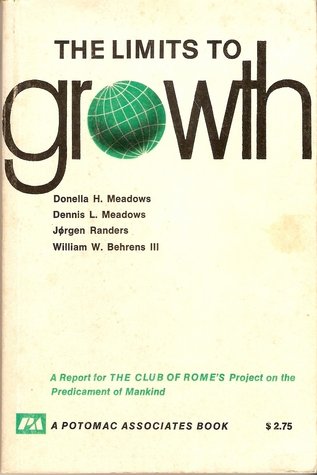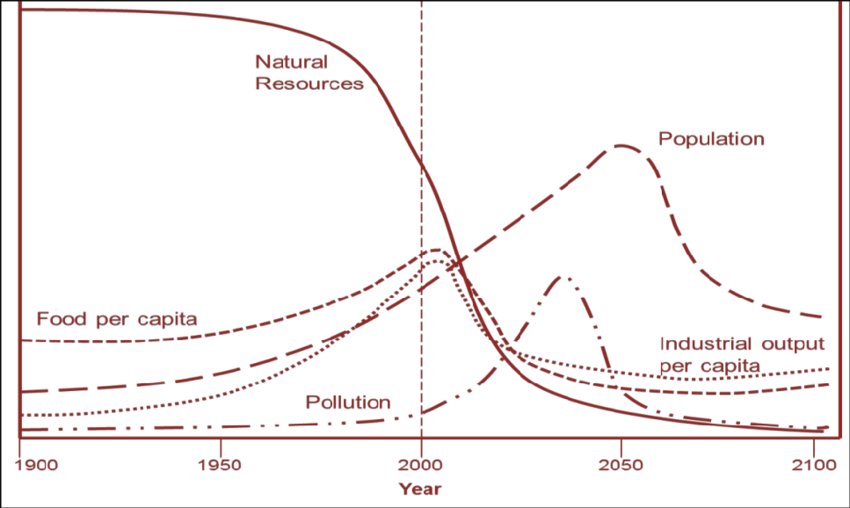When ‘Limits to Growth’ was first published back in 1972 the very idea that a computer program could, let alone should be used to predict an end to what everyone considered to be human progress upset a great number of people. After all, in the years following the end of World War 2 the world had seen unprecedented growth. Hundreds of millions of people in the developed countries of the world, the middle class, had achieved a level of material wealth beyond that of even the very rich just a few generations earlier. Automobiles, homes in the suburbs, vacations in far off places by air travel and, perhaps best of all television were just the more visible signs of a progress that it seemed would never end.


In fact one of the most criticized aspects of ‘Limits to Growth’ was the fact that the authors used all of that evidence of progress as a sign that ‘the end was near’! The faster the rate of progress, the higher the speed of growth they maintained the sooner human civilization will smack into one or another of the limits imposed by a finite Earth like a speeding car hitting a brick wall.

And to be honest ‘Limits to Growth’ is in many ways an expansion of and refinement of the old model of Thomas Malthus who in his 1798 essay ‘On the Principle of Population’ pointed out that since population increases geometrically while the supply of food only increases arithmetically when times are good it isn’t long before there comes a crash and large numbers of people starve. But of course Malthus was wrong, everybody knows that, the world’s population today is nearly ten times what it was in his day and yet now most people are better fed than they were 250 years ago. So Malthus was wrong, end of story.

That was fifty years ago when the first edition of ‘Limits to Growth’ was published. Since that time the pace of the world’s economic growth has slowed and much of what the authors suggested might happen is in fact occurring. Notice I said suggested might happen, not predicted, throughout the book the authors try to make it clear that they are not in the business of predicting the future. Rather they, and their computer analysis, are trying to assess possible futures.

And most of all what the authors warn us about is that our modern civilization, unlike that of Malthus, has many limits, not just food production. And in the last fifty years agricultural land degradation, decreasing fish stocks have occurred alongside declining reserves of oil and gas and increasing pollution and greenhouse gas induced climate change. As our technology has grown so has the number of limits that we are approaching. Whether it be non-renewable resources like oil or renewable ones that are being overused like fish stocks, or if it’s the buildup of pollutants far faster than the environment has a chance to clean them up there are now so many limits that technology and a free market can’t fix all of the problems at the same time.


So the authors of the original ‘Limits to Growth’ have published an update, including much of the data that has been gathered over the last 50 years and modifying their program by assessing what it was they got right back in 1972, and what they got wrong. And it’s important to point out that the author’s conclusions aren’t all doom and gloom. In fact the last two chapters of ‘Limits to Growth’ are devoted to the development of a sustainable society, there’s that word sustainable that we hear about all the time nowadays. Well the authors of ‘Limits to Growth’ were talking about a sustainable future 50 years ago and it’s still the best hope of avoiding a crash.

As I said above, growth over the last 50 years has become strained; in much the same fashion that ‘Limits to Growth’ suggested it would it its first edition. Time is now running out, we can either choose to limit our growth ourselves, to achieve a sustainable society, or we can continue to proceed as we have the last 300 years and crash into one or more of the limits that nature will soon impose upon us. ‘Limits to Growth’ is a book that needs to be read, needs to be talked about, and needs to be understood today, because there’s precious little time left.
